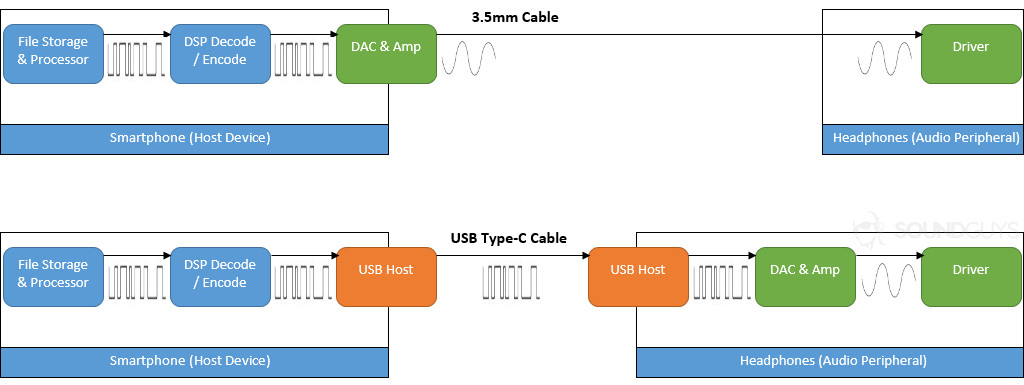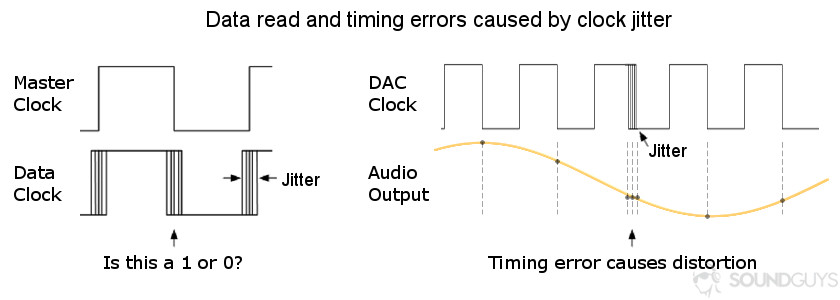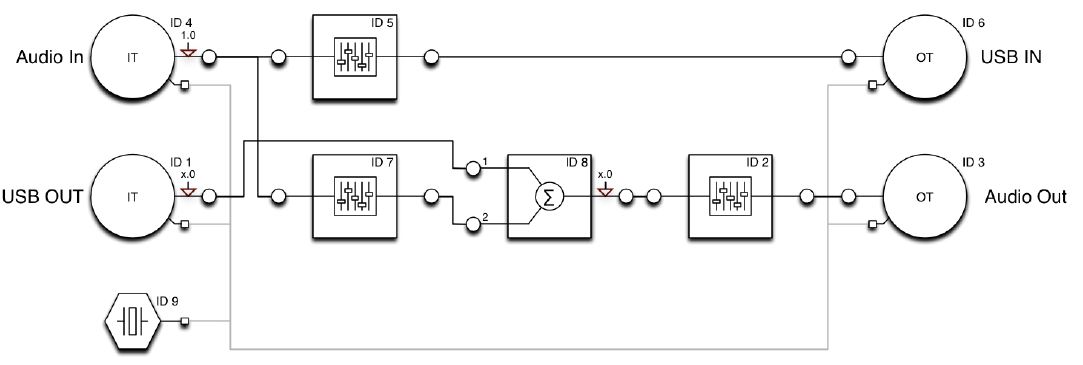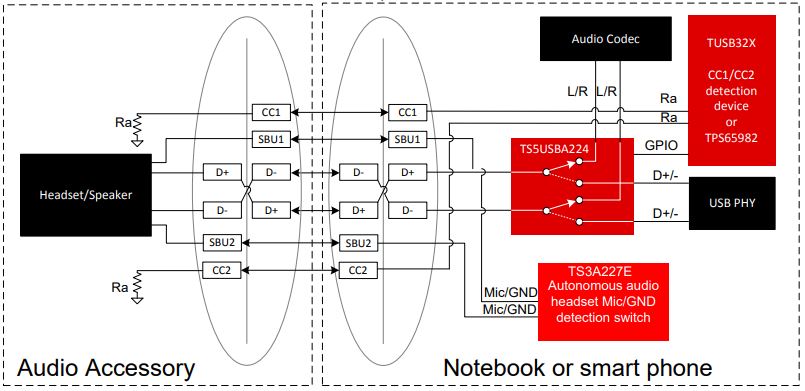All products featured are independently chosen by us. However, SoundGuys may receive a commission on orders placed through its retail links. See our ethics statement.
How USB-C headphones work
November 12, 2024
On September 23, 2021, the European Commission released a proposal that would make USB-C charging mandatory on most electronics (like smartphones and headphones) sold in the EU. This news will likely expand the market for USB Type-C headphones and dongles further, since smartphone manufacturers all but abandoned the tried and tested 3.5mm connector for the standard. The move to a primarily digital interface for headphones remains controversial, and the costs and ecosystem compatibility problems have proven more than a little problematic.
If you’ve wondered about the differences between USB-C and traditional headphones, look no further. We’ll explore how this technology works, its pros and cons, and pretty much everything else you’ll ever want to know.
Editor’s note: This article was updated on November 12, 2024, to update formatting, style guide issues.
What are the pros and cons of a digital audio interface?
The whole purpose of moving over to USB audio is to go digital. That is, to keep the signal in the digital domain for longer before converting to analog, preserving signal quality for as long as possible. Digital devices like smartphones are hotbeds of high-frequency clock signals and power lines — not the type of circuitry that you want to run your high-quality analog audio signals near. Give this link a read if you need a primer on digital vs analog signals.
The main advantage of switching to USB audio is that it moves the DAC and amp components from inside the source (smartphone) to the inside of the headphones or dongle. As each audio peripheral can now have its own DAC circuitry, this is more expensive in the long term. But now that headphone companies are in charge of these circuits, customers should experience better quality audio just by purchasing good headphones — in theory.

The move also introduces additional complexity when it comes to sending the audio signal. USB audio data transmits information as packets rather than a continuous stream of PCM audio and also requires a clock signal to keep everything in time when the data reaches the DAC. After USB transfer, data packets are decoded into a single audio data stream format that a DAC understands, such as I²S. The choice of clock system is very important for USB audio.
USB data and clock jitter
There are many ways to send data over USB: Asynchronous transfer is where the audio device’s oscillator determines the synchronizing USB clock and also links this to the speed of the DAC, therefore minimizing the risk of jitter. Jitter, by the way, occurs when a clock goes out of sync, causing data to be misread or miswritten.

USB audio isn't just about data transfer, it also includes digital communication for on-device features.
Isochronous transfer is popular because higher speed data transfer allows for data to be re-sent in time if an error is detected. The latest USB 3.1 specification includes a more robust synchronization scheme for these transfers, and is an optional feature for the latest USB Audio Class 3.0 specification for audio products. USB audio isn’t just about data transfer, it also includes digital communications for on-device feature controls that you don’t get with analog audio. For that, we need to know a little more about USB Audio Classes.
What are the USB Audio Classes?
The USB Audio Class specification allows a USB device to identify itself as an audio peripheral. This specification also determines a USB device’s compatibility with a range of specific USB functions and communication types suitable for audio. USB Audio Classes predate USB Type-C and work with both the new and legacy connectors.
Digital data for both audio and function controls are transmitted over the data (D+ and D-) USB pins, although there are a few different specifications that define exactly what information to transmit over those pins. Using a USB on the go (OTG) cable to turn external audiophile DACs into host devices has been a bit of a workaround for a while. However, this only transfers audio data. The best way to use the full set of available audio features over a USB port is to build devices, like headphones, that work with the USB Audio Device Class (ADC) specifications. Version 1.0 dates back to 1998 and still works well, but the latest 3.0 revision is far more interesting and important for modern headphones.
USB ADC 1.0 and 2.0
All of the audio class specifications break down into three parts — AudioControl for inner function controls like volume or EQ, MIDIStreaming for MIDI data, and AudioStreaming for the PCM audio data both to and from the headphones. Android smartphones running 5.0 Lollipop or newer all support a subset of version 1.0 as a minimum, and many newer devices support class 2.0 and even 3.0, too.
One big difference between Audio Class 1.0 and 2.0 is speed. Version 1.0 existed before High-Speed USB 2.0. Data speeds cap at 12Mbps with USB 1.0, and ADC 1.0 maxes out at 8.2Mbps. Audio Device Class 2.0 works with speeds up to 480Mbps and uses up to 196.6 Mbps for audio. Both are more than fast enough for high-quality stereo music streams, and the biggest difference is in the number of channels each can support.
USB Audio Class 1.0 supports up to 32-bit/96kHz or 16-bit/192kHz stereo audio. However, Android’s default implementation caps this to 24-bit/48kHz. Version 2.0 boosts this to 32-bit/384kHz, although this faster speed comes at the cost of higher power consumption, making it less ideal for portable devices like smartphones.

New USB ADC 3.0
USB Audio Class 3.0 isn’t any faster for stereo audio, but it does offer some important new features for modern headphones. The standard reduces power consumption with support for power idling between isochronous data transfers, making power consumption more competitive with the traditional 3.5mm jack. It also offers a more robust packet error protection scheme, making it less susceptible to jitter and data loss.
Audio Class 3.0's main benefits are better power efficiency and support for advanced processing features.
The standard mandates USB Basic Audio Device Definition (BADD) declaration for hardware, which defines common feature sets like microphone controls. The standard also introduces more AudioControl functions for advanced features like noise and echo cancellation. This is important to correctly expose these features to software over USB controls so that music player apps can take control of these functions without the need for proprietary software or USB communication methods.
Can you get analog audio over USB?
USB Type-C audio connections don’t actually have to be digital: you can actually get analog audio out, too. The USB standard also supports “Audio Accessory Mode”, whereby the D+/D- pins switch roles to support analog audio signals — again, this isn’t new to USB Type-C. Many phones with and without the new connector are designed to handle the negative voltage swing of the analog audio signal. Accessory Mode is popular with older USB audio dock devices, and the Android Open Accessory Protocol 2.0 with audio support has been around since Android 4.1.

Routing audio this way is no better than the old system using the 3.5mm audio jack (since digital signals aren’t employed) and is often worse: the output devices used aren’t generally optimized for audio, and the analog signal is close to noisy power and high-speed data lines, potentially reducing performance due to interference and noise. Unfortunately, many new USB-C dongles and headphones do make use of this mode, and support isn’t universal in the smartphone space either. This leads to many compatibility problems, which makes for a frustrating end-user experience.
What’s the difference between active and passive USB-C adapters?
All of the above applies to the new market for USB-C headphones, as well as USB-C to 3.5mm cables, dongles, and adapters, which also come in both active and passive varieties.
Audio Accessory Mode is not universally supported by smartphones, causing headphones and dongle compatibility issues.
The former benefits from digital audio and an integrated DAC, just like “digital” USB headphones. These can support USB Audio Class specifications, too, although most of them will just implement a DAC and amplifier rather than any post-processing components. Passive dongles work by exploiting USB Audio Accessory Mode to obtain an analog signal from your smartphone, and as such, they are usually the cheaper and — as explained above — lower-quality option.
As you can see, there are many options in the USB audio space, which can and has led to confusion. Unfortunately, there often isn’t an easy way to tell how nicely two devices will play with each other or which features are supported. For now, your best bet is to dive into product spec sheets and try to find out which version of USB Audio Class it supports. Either that or just stick to Bluetooth headsets!
Frequently asked questions
If they’re set up without an app in mind, just connect the headphones to your phone’s USB-C port and the other end to your headphones, and that should take care of it. You may need to enable an app to communicate with your headphones, but it should become clear pretty quickly if your headphones are compatible.
Yeah, USB audio is decent when it works — it avoids some headaches introduced by wireless tech at the expense of wired ones, but that’s not a big deal if you’re chasing audio quality.
USB-C headphones can offer better audio quality by keeping the signal digital longer and allowing for advanced features like noise cancelation.